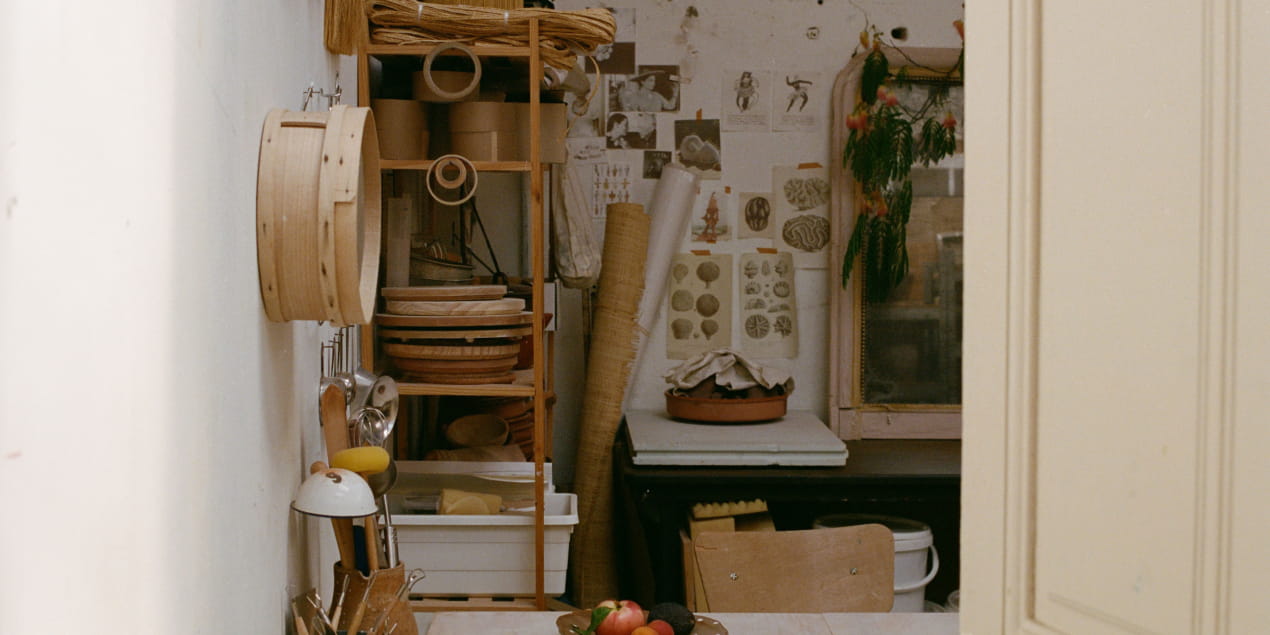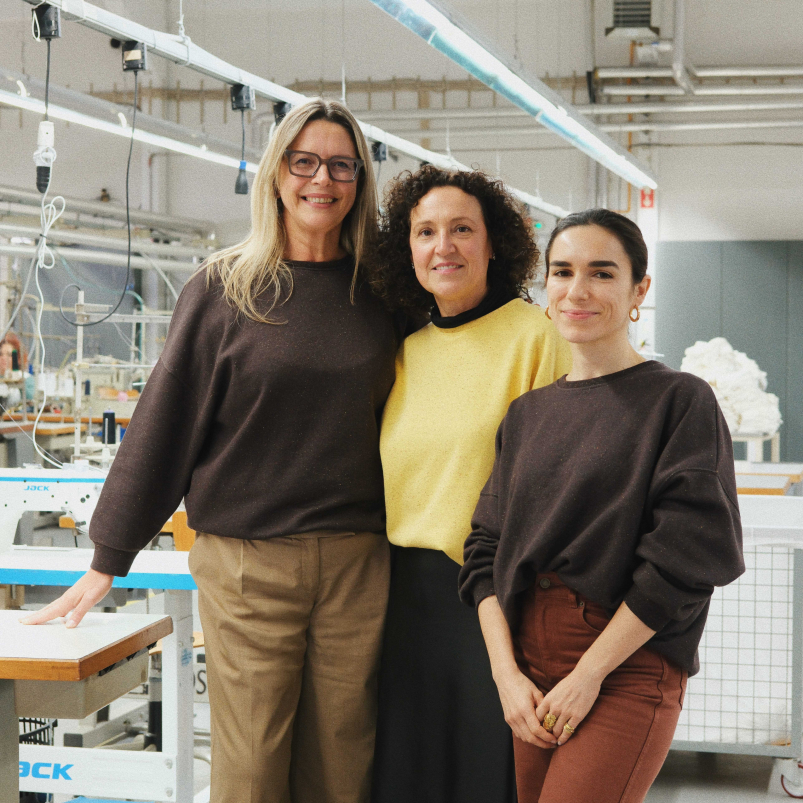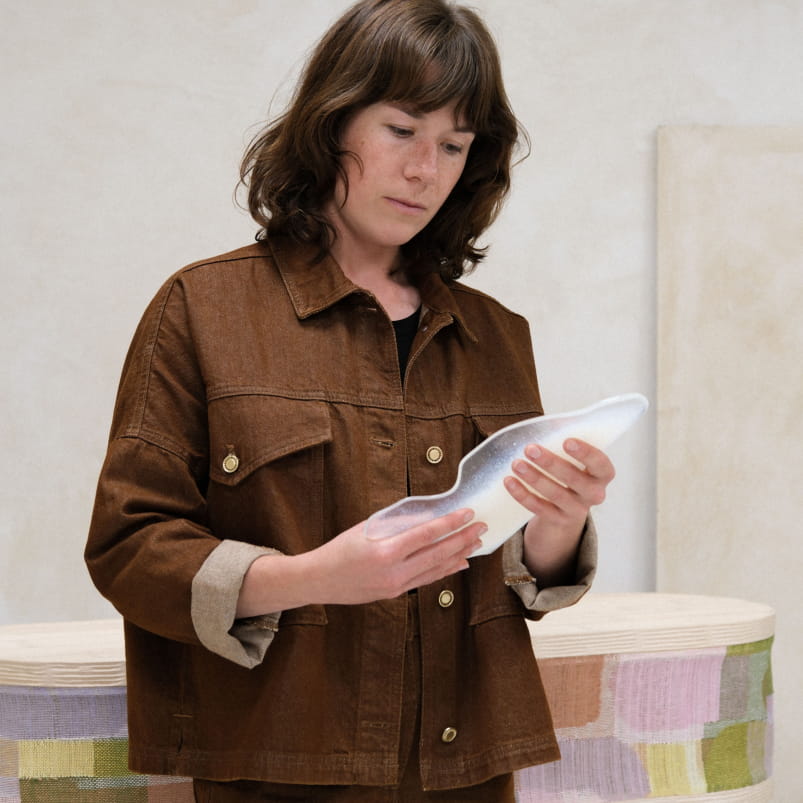Crédit Photos : Anna Leonte Loron
Sculptural and utilitarian ceramic pieces, collaborations with artisans, curation of exhibitions... Many different projects are part of the MANO MANI label founded by Julie Boucherat in 2019 in the heart of the Basque Country. From a family of artist-artisans, this self-taught artist draws her inspiration from traditional Japanese know-how and modern art. For the Floraison Créative exhibition at Sessùn Alma, she has designed a unique, endearing and organic ceramic piece – something you would want to live with in the same vein as a pet.
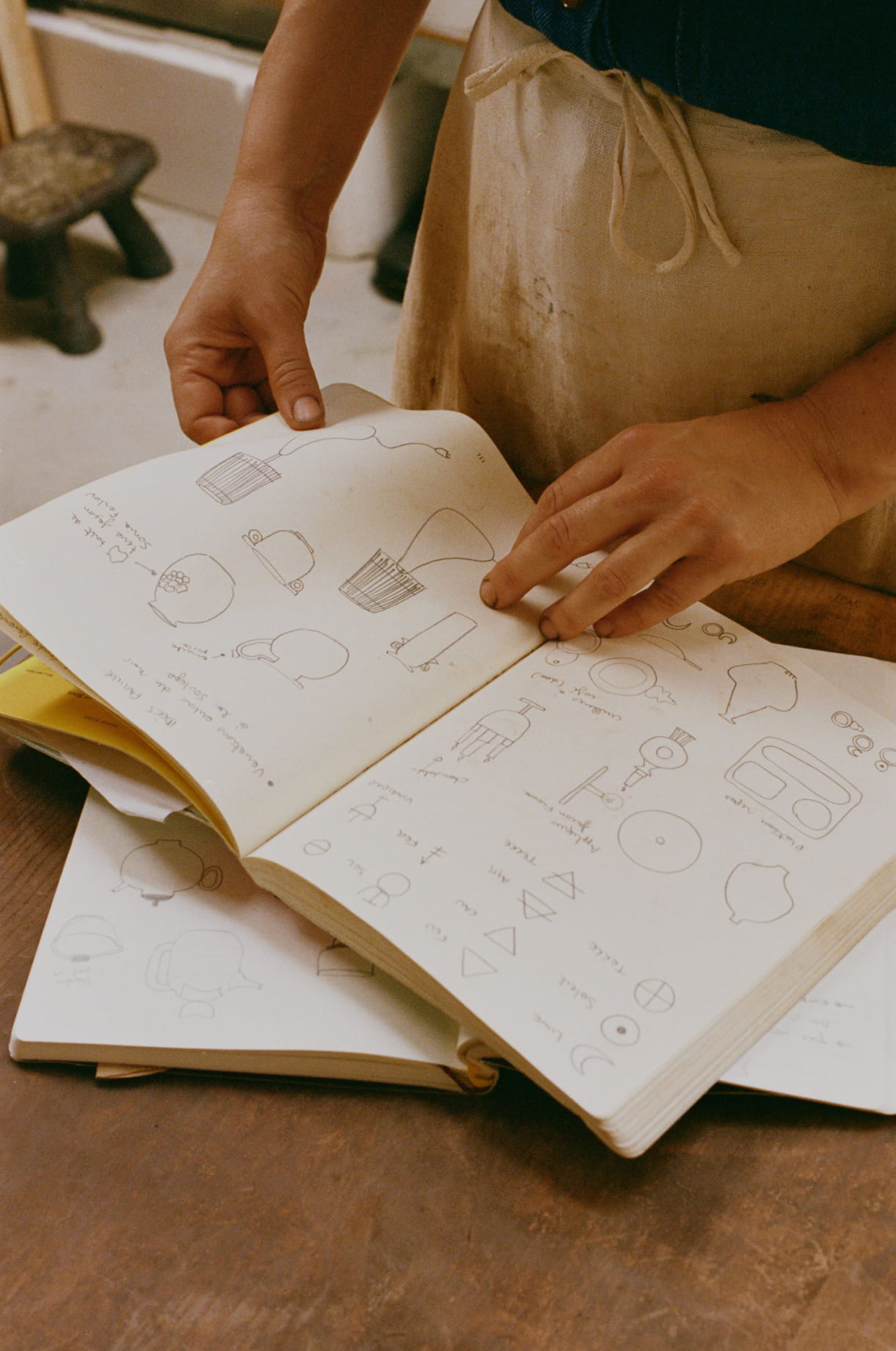

How did MANO MANI come about?
After working as a journalist in the design field for seven years in Paris, I decided to return to my origins, to clay: a living material I was introduced to at a very young age by my mother, also a ceramicist. In 2016, I decided to fully dedicate myself to my practice. Soon after, the birth of my daughter Mao was the catalyst for an exodus, and François, my partner, and I decided to settle in the Basque Country. As a Nice native of Corsican origin, I needed to leave Paris to be part of the natural rhythm of the seasons, with mountains and ocean nearby. This is where MANO MANI was born in 2019. At the crossroads of art and craft, this free and independent label allows me to concentrate on everything that drives me, without limits or schedules. It involves ceramics, of course, but also collaborations with artisans who have age-old know-how, as is the case for my MANO MANI Basque espadrilles, and curation, as recently with "Biodifformité'", a group exhibition I produced and organised in September 2021, and in which I participated as an artist alongside Kethevane Cellard and Paola Rodriguez.
What does your workshop look like and what makes it unique?
My studio is simple, small, modest. It suits me well. I love picking branches, hanging them above my workspace, and then watching them evolve over days. I don't have running water, and it turns out this is actually a blessing. What could have been a problem has become an advantage: I work with different water tanks, it's incredibly eco-friendly, and I'm very proud of it.
My studio is tucked away at Pioche Projects, an alternative art space in a large industrial building in the Bibi district (Beau Rivage, in Biarritz). This old fishermen's district is near the famous Côte des Basques. We organise exhibitions, masterclasses, concerts and other events to bring the place and the district to life, and this is unique.
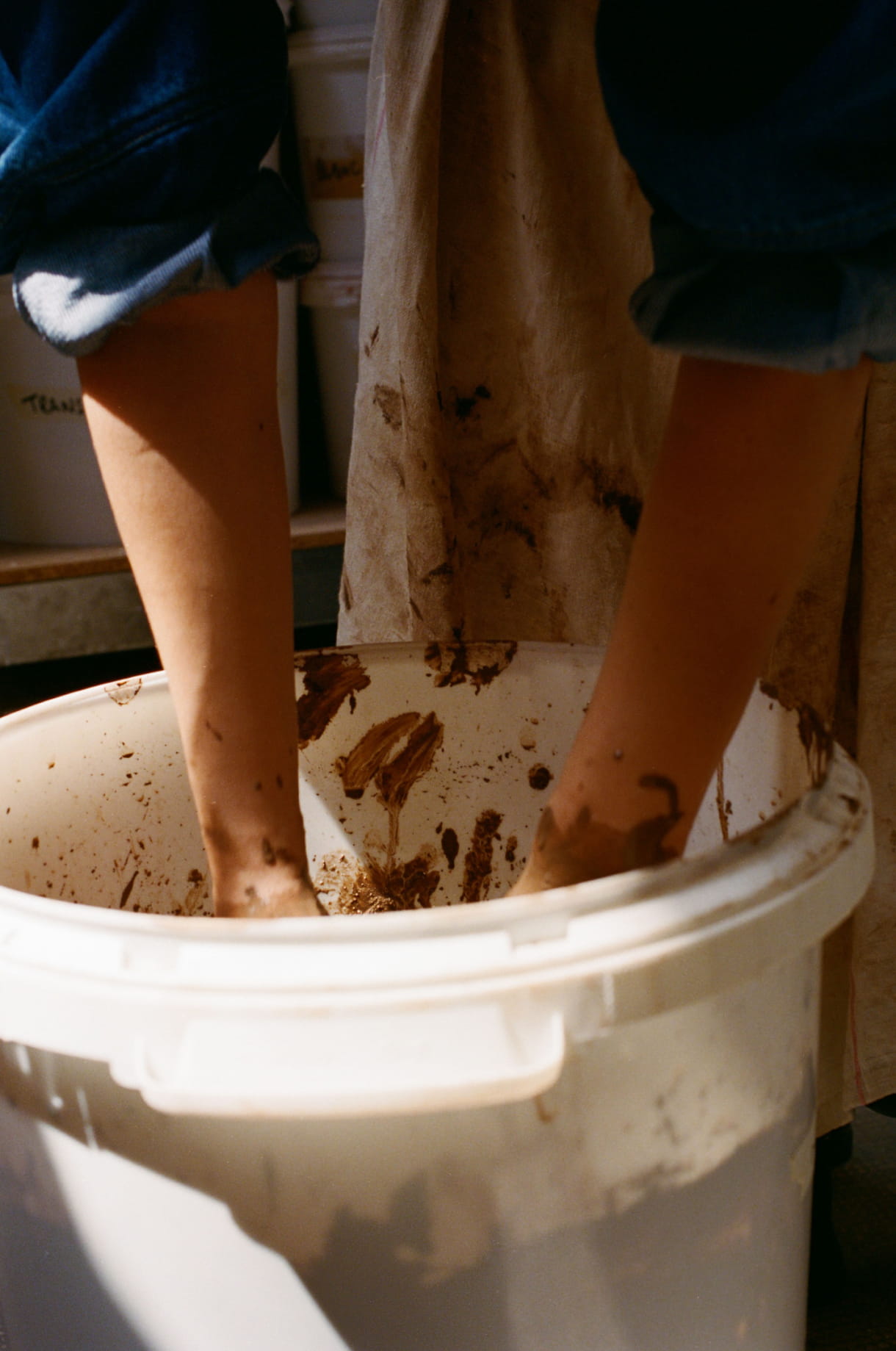
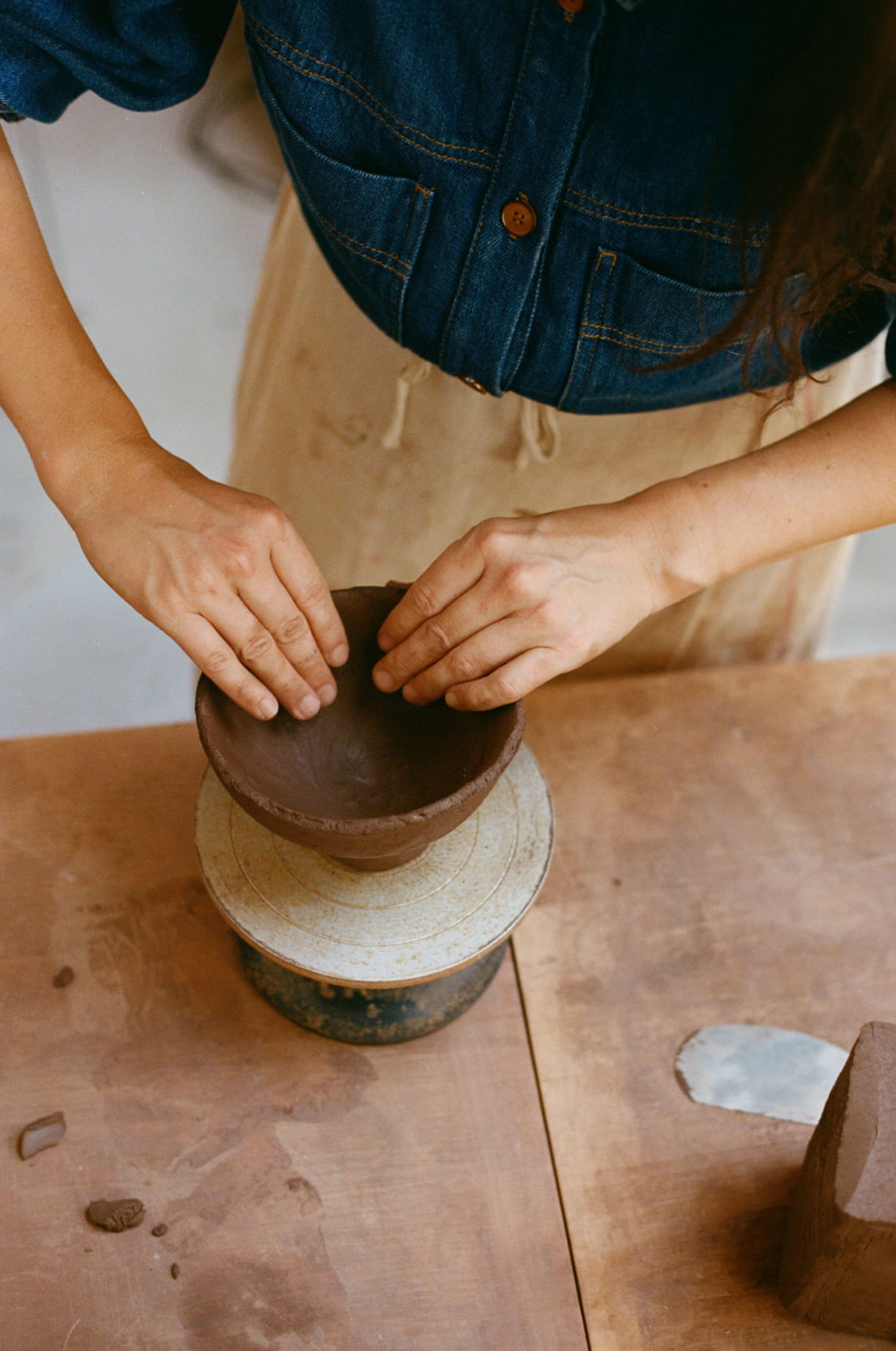
You grew up in a family of artist-artisans and so experienced studio life at an early age. What do you remember about it?
I spent a lot of time at my mother's shared studio. I remember everything: the smells, the new blocks of clay I loved helping myself to, the pieces that dried under the plastic, ghost-like. At that time, I already loved making little accessories for the table. I remember producing knife holders for Christmas.
On my mother's side, my grandmother was a seamstress and my grandfather was an upholsterer. They lived in a large house in the Vosges Forest. My grandfather's workshop was in a small building at the bottom of the garden. I loved to wander around when it was empty: out of the darkness came a smell of wax, the carcasses of old furniture, dusty fabrics and huge machines. I loved going through my grandmother's meticulous belongings. Sliding my fingers into her button boxes, I felt like I was finding real treasures.
On my father's side, in Corsica, my grandfather Denis was an antiques dealer, and I clearly remember his shop and all its wonders. There was a tiny adjoining courtyard with a large fig tree in the middle. In the summer, we used to pick the figs. They were huge, with purple skin and red flesh. They were the best I've eaten, and I'll always remember them.
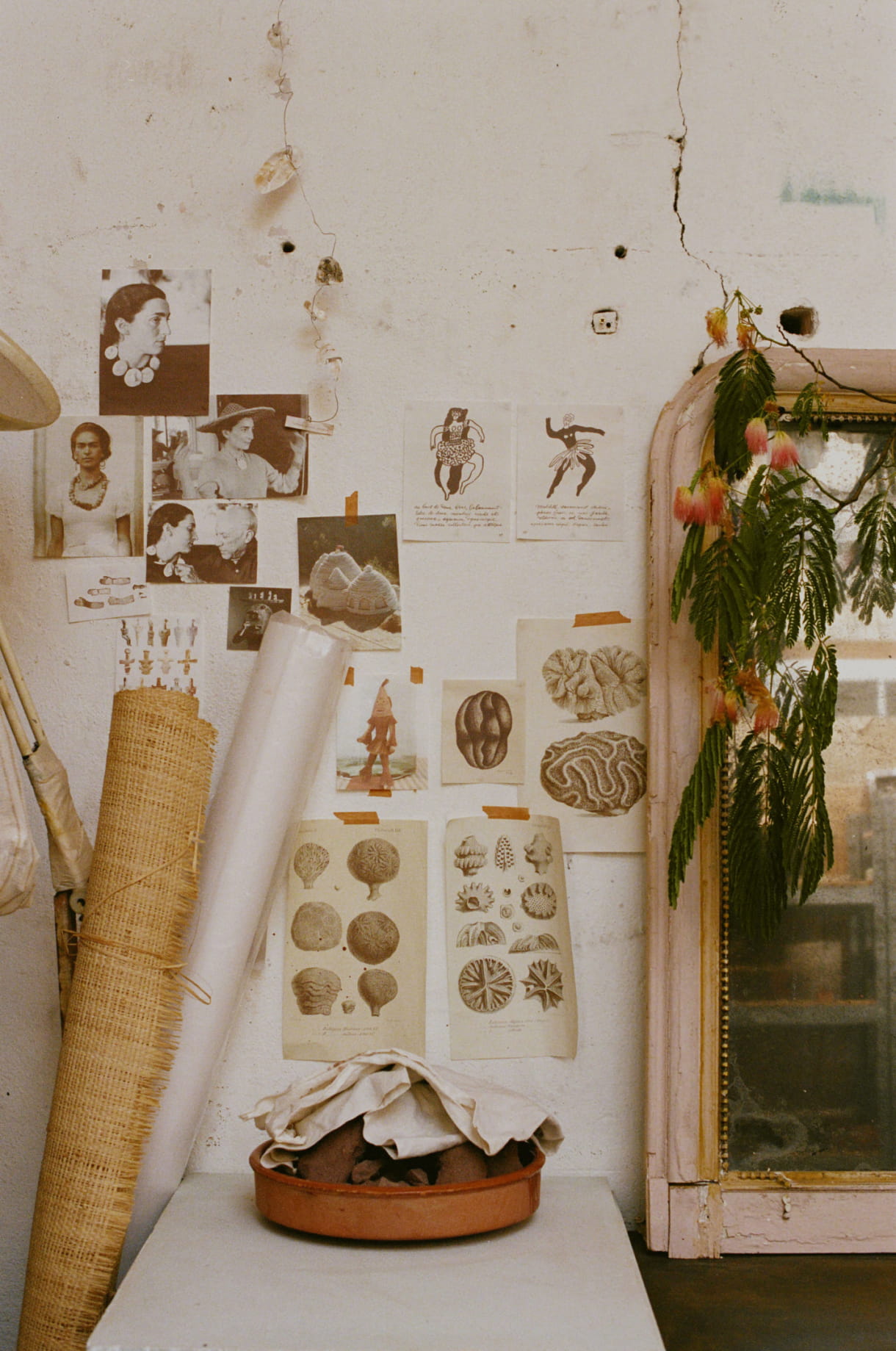
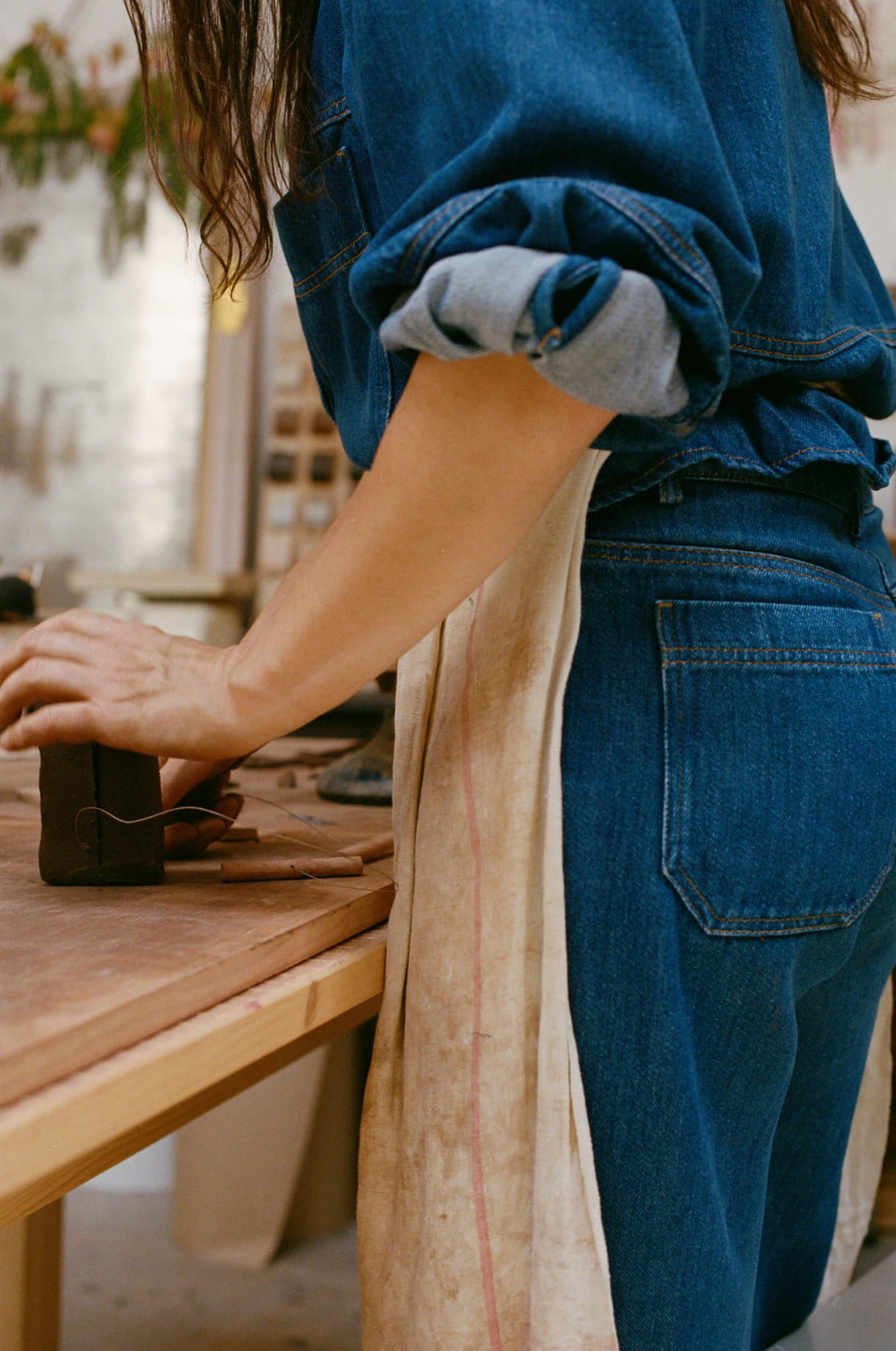
You have various different inspirations. Where do they come from?
There are a few. I would say I love Arte Povera, an Italian artistic movement from the sixties. I adore the work of the Basque sculptor Eduardo Chillida, whose foundation "Chillida Leku" in the Southern Basque Country is somewhere everyone should visit at least once. There are also, in no particular order: Joan Miró, Pierrette Bloch, Koshiro Onchi, Sheila Hicks, Frida Kahlo, Martin Margiela, Pablo Picasso, Louise Bourgeois, Valentine Schlegel, the Giacometti family, Bernard Leach, Lucie Rie, Giorgio Morandi, Amédée Ozenfant... and so many others too. I'm also very interested in crafts in general, specifically Japanese skills: ceramics of course, but also embroidery, woodwork, basketry, weaving... If I could, I would learn to do everything. The poetry of a simple and domestic object also inspires me a lot: a brush, a basket, a spoon...
Inspiration is everywhere, in the nature that surrounds us, but also in the heritage of past civilisations. I'm very attached to legends, symbolism and traditions. This is also why I moved to the Basque Country.
Why did you choose modelling as your main technique?
I like mistakes, irregularities, curves and organic shapes. I'm resolutely self-taught, and need to try, to experiment and to search to eventually find what I'm looking for. I like to be able to control the whole process to understand what I'm doing and get what I want. I need time: I think a lot before shaping. But once I'm in front of the clay, I let it guide me and give up some control. Clay has strong powers of decision and orientation, and I love learning to listen to it, to follow.

What role do creative research and experimentation play in your work?
In the workshop, everything always begins with an experimental phase. This can be research into a new repertoire of forms; or research into a particular technique that I then use on different types of pieces; or research into the material, with experimentation with new clays, treatment then the tests carried out on wild clay I collect during my different trips; or research into colour, with the development of new glazes or engobes allowing me to create my personal palette with natural tones and matt finishes – which is my signature.
Once these experimental phases are completed, I determine which pieces I will shape. It could be a sophisticated piece of art or a simple cup.
For all my pieces, I use grogged stoneware in ivory, black, red or burgundy. I like the natural colour of the sandstone to come through on each of my pieces.
One of the most important things for me is the texture, the raw character of a piece. It's essential to feel the material when holding a ceramic piece in your hands, to feel connected to it, like a ritual.
Tell us about the piece you came up with for Sessùn's Floraison Créative carte blanche commission.
My ''Flacon de compagnie'' is the result of reflection on domestic ceramics, or how to create an endearing piece with which you'd want to live and share the same living environment. The idea of the pet ceramic, like a pet animal, was born. It's very organic: you can almost see it breathing. Its shell, with the scales of a pangolin rolled into a ball and the black plumage punctuated with white dots of an African guinea fowl, looks like a second skin. This piece is intended to stimulate the imagination.
My "Flacon de compagnie" is also the continuation of a typological experimentation. I'm working on a series of bottles that I imagine could contain precious elixirs. I have made more than 20 of them in the last few months. This very large piece is a disproportionate reinterpretation of my classic bottles, which challenges the notion of scale.
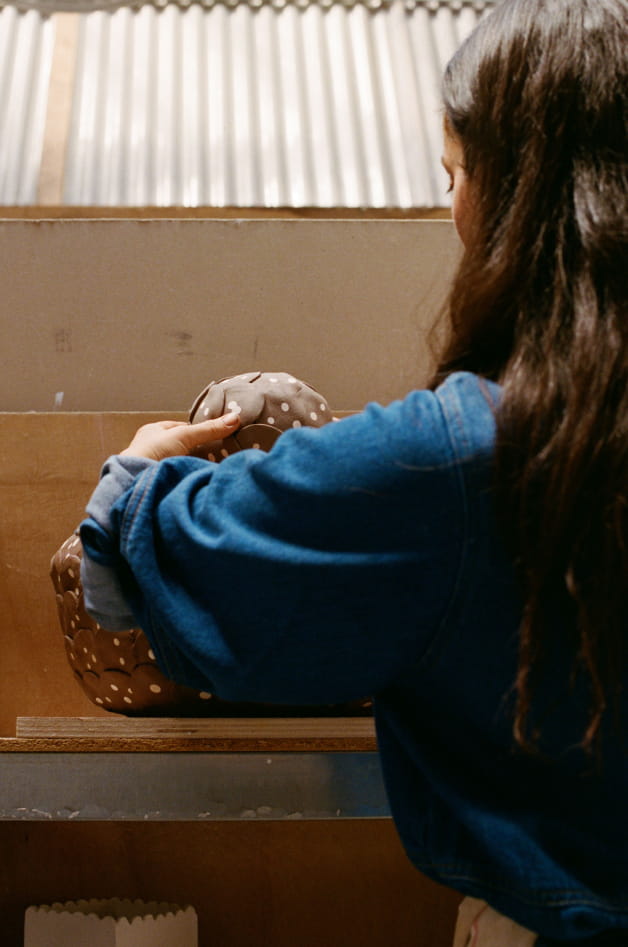
What do you remember about this carte blanche experience?
Carte blanche is everything an artist dreams of: it's about bringing our original thoughts to life and having the opportunity to share them publicly.
Retrouvez le look de Julie Boucherat

